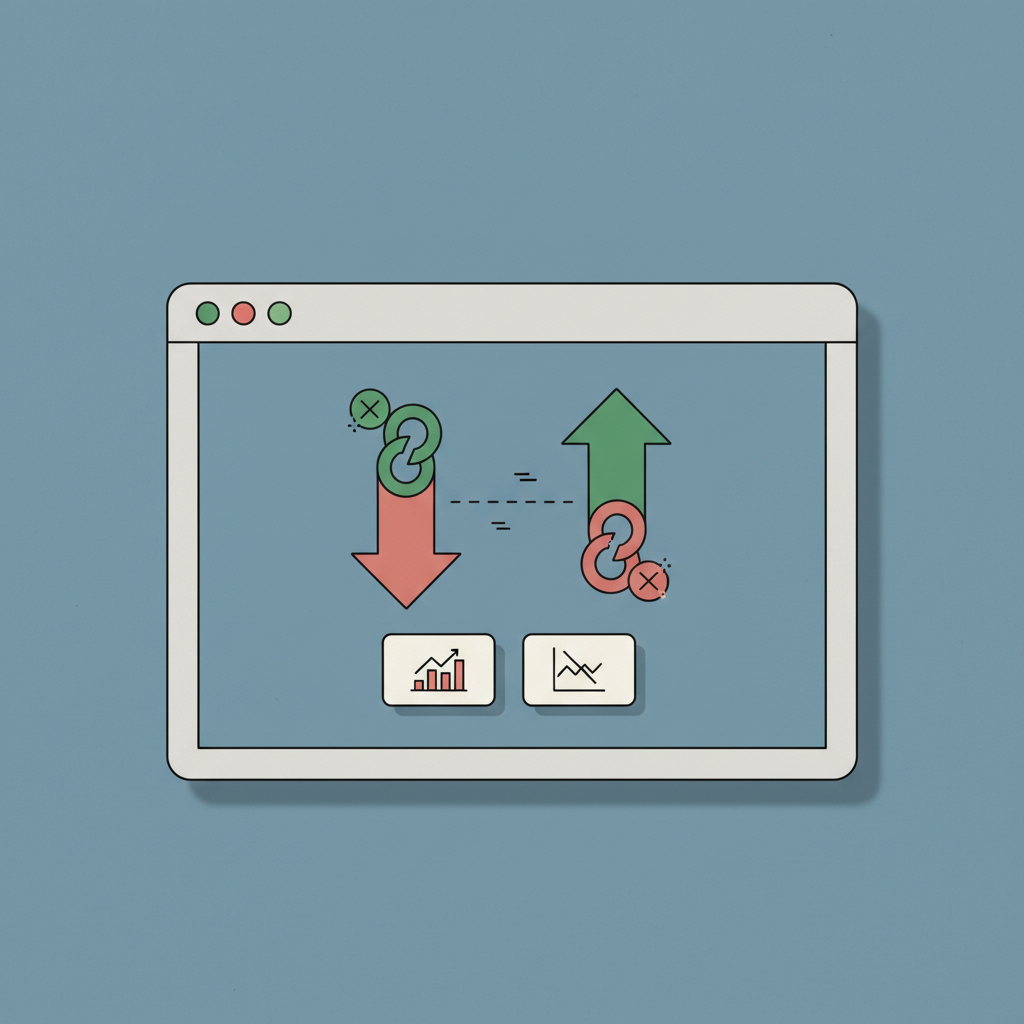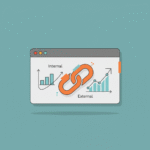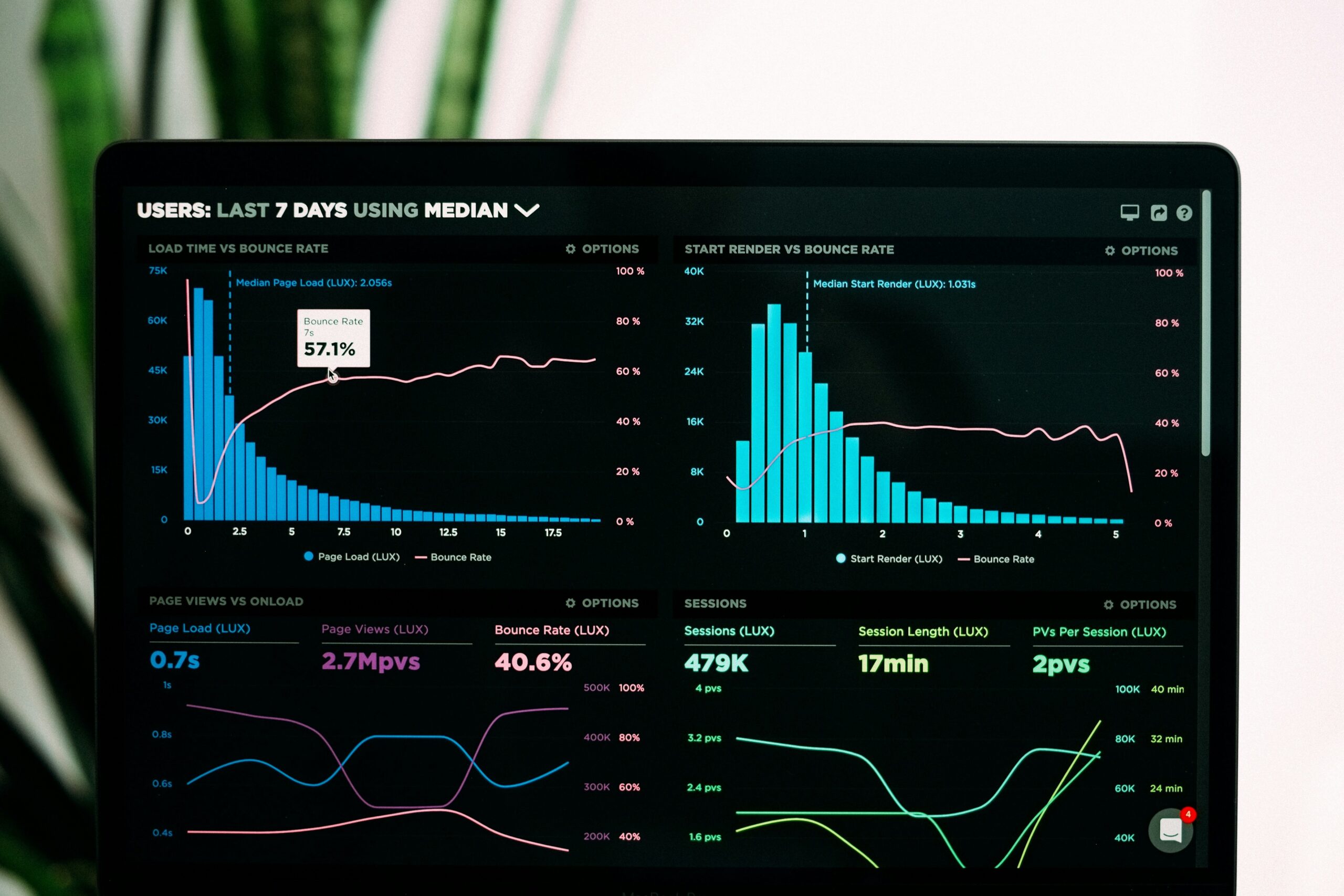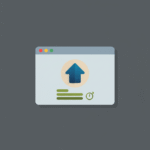In the intricate ecosystem of the internet, links are the fundamental pathways that connect billions of pages, forming the vast network we call the World Wide Web. For search engines like Google, these links are more than just simple connections; they are powerful signals of trust, authority, and relevance. They act as votes of confidence from one website to another. However, not all of these votes carry the same weight. The distinction between dofollow and nofollow links is one of the most critical concepts in search engine optimization (SEO), yet it remains a source of confusion for many marketers, business owners, and content creators.
Understanding this difference is not just an academic exercise for SEO professionals. It’s a practical necessity for anyone looking to build a robust online presence. A strategic approach to links can dramatically impact your website’s ability to rank for competitive keywords, drive organic traffic, and establish itself as an authority in its niche. Conversely, a misunderstanding can lead to wasted effort on link-building campaigns that yield minimal results or, in worse cases, attract penalties from search engines.
This comprehensive guide will demystify the world of dofollow and nofollow links. We will break down exactly what each link type is, explore their distinct roles in SEO, and examine how search engines interpret them. We’ll also delve into the evolution of link attributes with the introduction of sponsored and ugc tags. By the end, you will have a clear, actionable framework for analyzing link profiles, building a healthy backlink strategy, and making informed decisions that drive meaningful SEO growth.
The Foundation of SEO: What Are Backlinks?
Before we can dissect the differences between dofollow and nofollow, it’s essential to understand the foundational role of backlinks in SEO. A backlink, also known as an inbound link or incoming link, is created when one website links to another. Think of it as a citation in a research paper. When a reputable academic journal cites a study, it lends credibility to that study. Similarly, when an authoritative website links to your content, it signals to search engines that your content is credible, valuable, and trustworthy.
Google’s original algorithm, PageRank, was built on this very concept. It posited that more important websites were likely to receive more links from other websites. While the algorithm has evolved to become vastly more complex, incorporating hundreds of ranking factors, this core principle remains a cornerstone of how search engines evaluate and rank web pages. A strong backlink profile is one of the most powerful assets a website can have.
Key aspects of backlinks that influence SEO include:
- Authority of the Linking Domain: A link from a major news outlet or a leading industry blog carries significantly more weight than a link from a small, unknown blog.
- Relevance of the Linking Page: A link from an article about digital marketing to your guide on SEO is more valuable than a link from an article about gardening.
- Anchor Text: The clickable text used in the link provides context to search engines about the content of the linked page.
- Link Placement: Links placed within the main body content of a page are generally considered more valuable than links in a footer or sidebar.
It is within this framework that the dofollow vs. nofollow distinction becomes critically important, as it directly dictates whether a link’s authority—often called “link equity” or “link juice”—is passed from the linking site to the destination site.
Understanding Dofollow Links: The SEO Powerhouse
A dofollow link is the standard, default type of hyperlink. When you add a link to a page without any special instructions, it is inherently a dofollow link. Its primary function, from an SEO perspective, is to pass authority from the linking page to the linked page. This passing of authority is what helps the linked page improve its search engine rankings.
When a search engine crawler, like Googlebot, encounters a dofollow link, it follows that link, indexes the destination page, and passes a portion of the linking page’s authority (PageRank) to it. This is the mechanism that makes link building such a potent SEO strategy. Earning high-quality dofollow backlinks is a direct way to tell search engines that your content is endorsed by other established players on the web.
The HTML Structure of a Dofollow Link
The code for a dofollow link is simple and clean. It’s a standard anchor tag (<a>) with an href attribute pointing to the destination URL. There are no additional attributes needed to define it as dofollow.
Example: <a href="https://www.example.com">This is a dofollow link</a>
Because this is the default state, you will never see an attribute like rel="dofollow". The absence of a nofollow (or sponsored/ugc) attribute is what makes it a dofollow link.
The SEO Impact of Dofollow Links
The impact of dofollow links is direct and significant:
- Improved Search Rankings: They are a primary factor in how high your pages rank in search results.
- Increased Domain and Page Authority: Tools like Moz and Ahrefs use the quantity and quality of dofollow links to calculate authority metrics (Domain Authority, Domain Rating) that predict a site’s ranking potential.
- Faster Indexing: When authoritative sites link to your new content with dofollow links, it can help search engines discover and index your pages more quickly.
Examples of common sources for valuable dofollow links include guest posts on reputable industry blogs, editorial placements in online news publications, links from resource pages, and mentions from partners or suppliers.
Understanding Nofollow Links: A Directive for Search Engines
A nofollow link is a hyperlink with a special attribute, rel="nofollow". This attribute was introduced by Google in 2005 as a way to combat comment spam on blogs. At the time, spammers were flooding comment sections with links back to their own websites to manipulate PageRank and improve their rankings. The nofollow tag gave webmasters a tool to prevent these low-quality links from passing authority, thus disincentivizing the spam.
When a search engine crawler encounters a link with the rel="nofollow" attribute, it understands that the linking site does not want to pass along any of its authority or endorsement to the linked page. For many years, this was interpreted as a strict directive: do not follow this link for ranking purposes.
The HTML Structure of a Nofollow Link
The code for a nofollow link includes the rel="nofollow" attribute within the anchor tag.
Example: <a href="https://www.example.com" rel="nofollow">This is a nofollow link</a>
Google’s Evolution: Nofollow as a Hint
In September 2019, Google announced a significant change in how it treats the nofollow attribute. Instead of being a strict directive, nofollow (along with the newly introduced sponsored and ugc attributes) is now treated as a “hint.” This means Google’s crawlers may choose to follow the link and use it for ranking calculations, or they may choose to ignore it. This change gives Google more flexibility to understand link patterns across the web and to devalue manipulative link schemes more effectively, while potentially giving credit where it might be due, even if a link is marked nofollow.
Common places where you’ll find nofollow links include:
- Blog comments
- Social media posts (e.g., links in a tweet or Facebook post)
- Forum signatures and posts
- Links in press releases
- Links on major user-generated content platforms like Wikipedia, Quora, and Reddit
- Paid or affiliate links (though
rel="sponsored"is now the preferred attribute)
Dofollow vs Nofollow: A Head-to-Head Comparison
To clarify the key distinctions, let’s compare these two link types side-by-side.
| Feature | Dofollow Links | Nofollow Links |
| Primary Purpose | To endorse a linked page and pass SEO authority (link equity). | To prevent passing SEO authority and indicate a lack of endorsement. |
| SEO Impact | Directly and positively influences search engine rankings and domain authority. | Generally does not directly pass ranking authority (treated as a “hint” by Google). |
| HTML Attribute | None required. This is the default state of a hyperlink. | Requires the rel="nofollow" attribute within the <a> tag. |
| Crawler Instruction | Instructs search engine crawlers to follow the link and pass PageRank. | Suggests to crawlers that they should not pass PageRank through the link. |
| Common Use Cases | Editorial links, guest posts, resource pages, partner links. | Blog comments, forum posts, social media links, paid advertisements. |
| Value for SEO | High. The primary target for most strategic link-building campaigns. | Low direct value, but high indirect value (traffic, brand awareness). |
Export to Sheets
The New Link Attributes: Sponsored and UGC
Alongside the 2019 update to nofollow, Google introduced two new link attributes to provide more granular information about the nature of a link. Using these more specific attributes is now considered a best practice.
rel=”sponsored”
This attribute should be used to identify links that are part of advertisements, sponsorships, or other paid arrangements. If you pay for a link in any form—whether it’s a banner ad, a paid guest post, or an affiliate link—you should use rel="sponsored". This provides clear transparency to search engines about the commercial nature of the link, helping them avoid giving undue ranking credit for paid placements.
Example: <a href="https://www.example.com/product" rel="sponsored">Check out this amazing product!</a>
You can also use it in combination with nofollow if you want to support older systems that don’t recognize the sponsored attribute: rel="nofollow sponsored".
rel=”ugc”
UGC stands for User-Generated Content. This attribute is designed for links that appear within content created by users, such as blog comments and forum posts. Since webmasters cannot always vouch for the quality of every link posted by their users, the ugc attribute helps search engines identify these links. It signals that the link was not editorially placed by the site owner.
Example: <a href="https://www.users-website.com" rel="ugc">Here is a link to my website</a>
Using rel="ugc" in your comment sections is a modern best practice that replaces the blanket use of rel="nofollow" for this purpose.
Building a Healthy and Natural Link Profile
A common mistake in SEO is to adopt a black-and-white view: dofollow links are good, and nofollow links are useless. This oversimplification can lead to a flawed and unnatural link-building strategy. In reality, a healthy, natural, and authoritative backlink profile contains a diverse mix of dofollow, nofollow, sponsored, and UGC links.
Think about it from a search engine’s perspective. A website that has only high-authority, keyword-rich, dofollow backlinks looks highly suspicious and manipulative. A natural profile, however, reflects how links are acquired organically on the web. A popular brand will be mentioned on social media (nofollow), discussed in forums (UGC/nofollow), and featured in both paid (sponsored) and earned (dofollow) media.
The Indirect Value of Nofollow Links
While they may not pass direct ranking authority, nofollow links offer significant indirect SEO and marketing benefits:
- Referral Traffic: A nofollow link on a high-traffic page, like a popular Wikipedia article or a viral Reddit thread, can send a massive amount of highly relevant traffic to your website. This traffic consists of users who are already interested in your topic, leading to higher engagement and potential conversions.
- Brand Awareness and Exposure: Getting your brand, product, or content mentioned on major publications, social platforms, or forums builds brand recognition and credibility. Even if the link is nofollow, the exposure itself is valuable. This can lead to future “branded searches” where users search for your company name directly—a strong positive signal to Google.
- Future Dofollow Opportunities: A nofollow link can often be the first step toward a dofollow one. For example, a journalist might discover your company through a nofollow link in a press release and later decide to feature your business in an editorial story with a dofollow link.
How to Check if a Link is Dofollow or Nofollow
Identifying the type of a link on any given webpage is a straightforward process. Here are three common methods, ranging from manual inspection to automated tools.
Method 1: Manual Inspection in Your Browser
This method requires no special tools and works in any modern web browser like Chrome, Firefox, or Safari.
- Navigate to the webpage containing the link you want to check.
- Right-click on the link or nearby text and select “Inspect” or “Inspect Element” from the context menu. This will open your browser’s developer tools.
- The developer tools panel will open with the HTML code of the page, and the specific
<a>tag for the link you clicked should be highlighted. - Examine the
<a>tag. Look for arelattribute. If you seerel="nofollow",rel="sponsored", orrel="ugc", it is not a standard dofollow link. If there is norelattribute, or if it contains other values but not these, the link is dofollow.
Method 2: Using Browser Extensions
For those who need to check links frequently, browser extensions can automate the process and provide at-a-glance insights.
| Extension Name | Key Feature | Best For |
| MozBar | Highlights nofollow, dofollow, internal, and external links in different colors. | All-in-one SEO analysis directly in the browser. |
| SEOquake | Provides a wide range of SEO parameters, including link analysis. | Users who want deep data on search result pages. |
| NoFollow | A simple extension that outlines all nofollow links on a page with a red box. | Quick and easy identification of nofollow links. |
Export to Sheets
These extensions make it easy to see the status of all links on a page without needing to inspect the HTML code manually.
Method 3: Backlink Analysis Tools
To analyze your own website’s backlink profile or that of a competitor, you’ll need a dedicated SEO tool. Platforms like Ahrefs, SEMrush, and Moz crawl the web and maintain massive databases of links. Using these tools, you can enter any domain and get a comprehensive report that includes:
- A list of all backlinks pointing to the site.
- The anchor text of each link.
- The authority of the linking domain.
- A clear label indicating whether each link is dofollow, nofollow, UGC, or sponsored.
- An overall summary of the dofollow vs. nofollow ratio.
These tools are indispensable for conducting backlink audits, tracking link-building campaigns, and performing competitive analysis. For instance, you can use a tool like Google Analytics to track referral traffic from nofollow sources and a tool like Asana or Trello to manage your link-building outreach efforts.
Conclusion: Building Your Unfair Advantage with Content
The distinction between dofollow and nofollow links is a fundamental pillar of modern SEO. Dofollow links serve as direct endorsements that pass authority and are the primary drivers of ranking improvements. Nofollow links, along with their more specific sponsored and ugc counterparts, act as signals to search engines to be more cautious, preventing the flow of link equity in situations involving paid placements or user-generated content.
However, a truly sophisticated SEO strategy moves beyond the simplistic view that one is “good” and the other is “bad.” The goal is not to accumulate dofollow links at all costs but to build a diverse, natural, and authoritative backlink profile that sends holistic signals of trust to search engines. Nofollow links play a vital role in this ecosystem by driving valuable referral traffic, increasing brand exposure, and creating a profile that appears authentic and organic.
Instead of obsessing over a link’s rel attribute, focus your efforts on a higher-level goal: creating exceptional content and building genuine relationships. When you produce content that is truly valuable, insightful, and helpful, you will naturally earn links from a wide variety of sources. Some will be dofollow, and some will be nofollow. But together, they will form a powerful, defensible moat that solidifies your website’s authority and drives sustainable, long-term growth in the search results.







